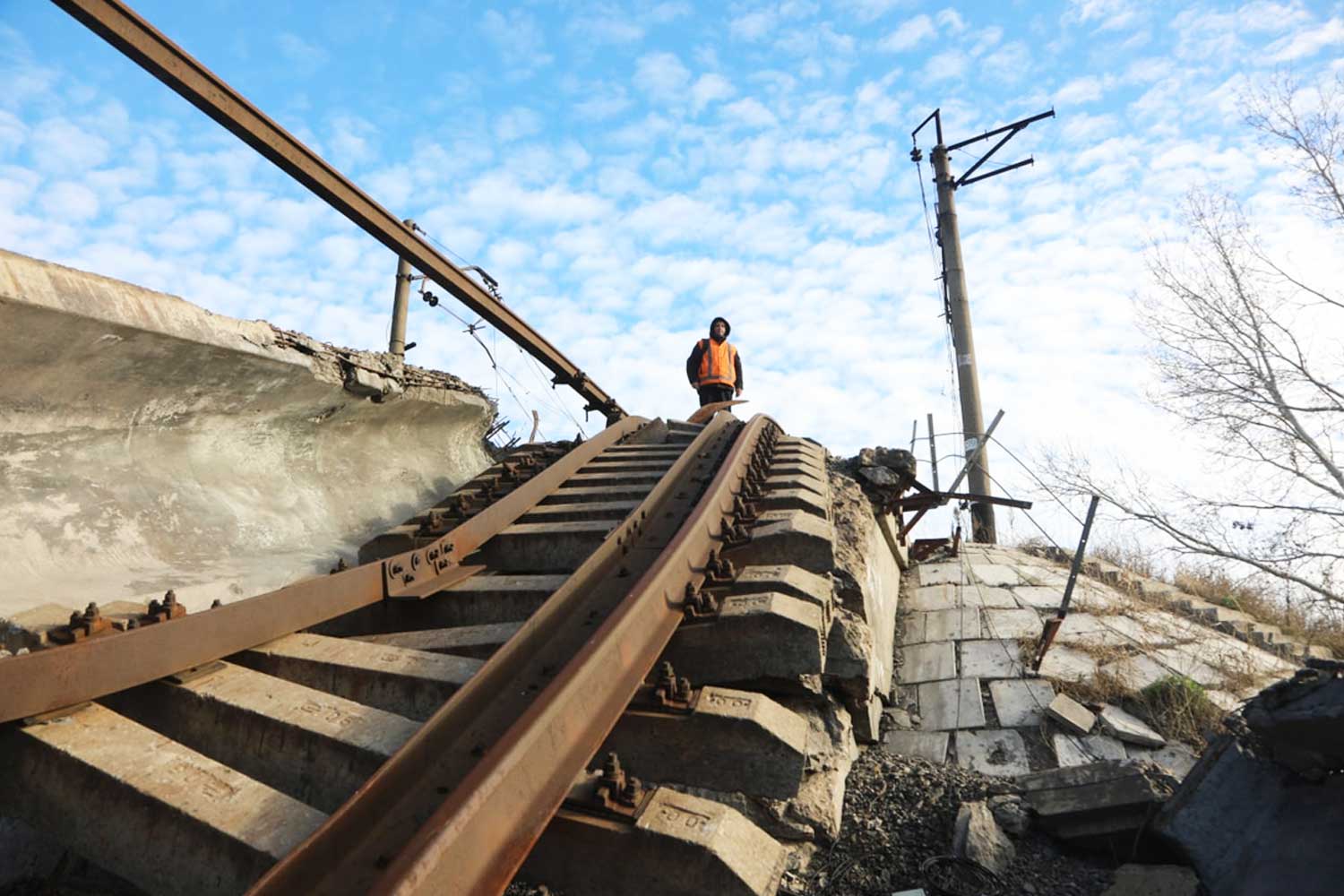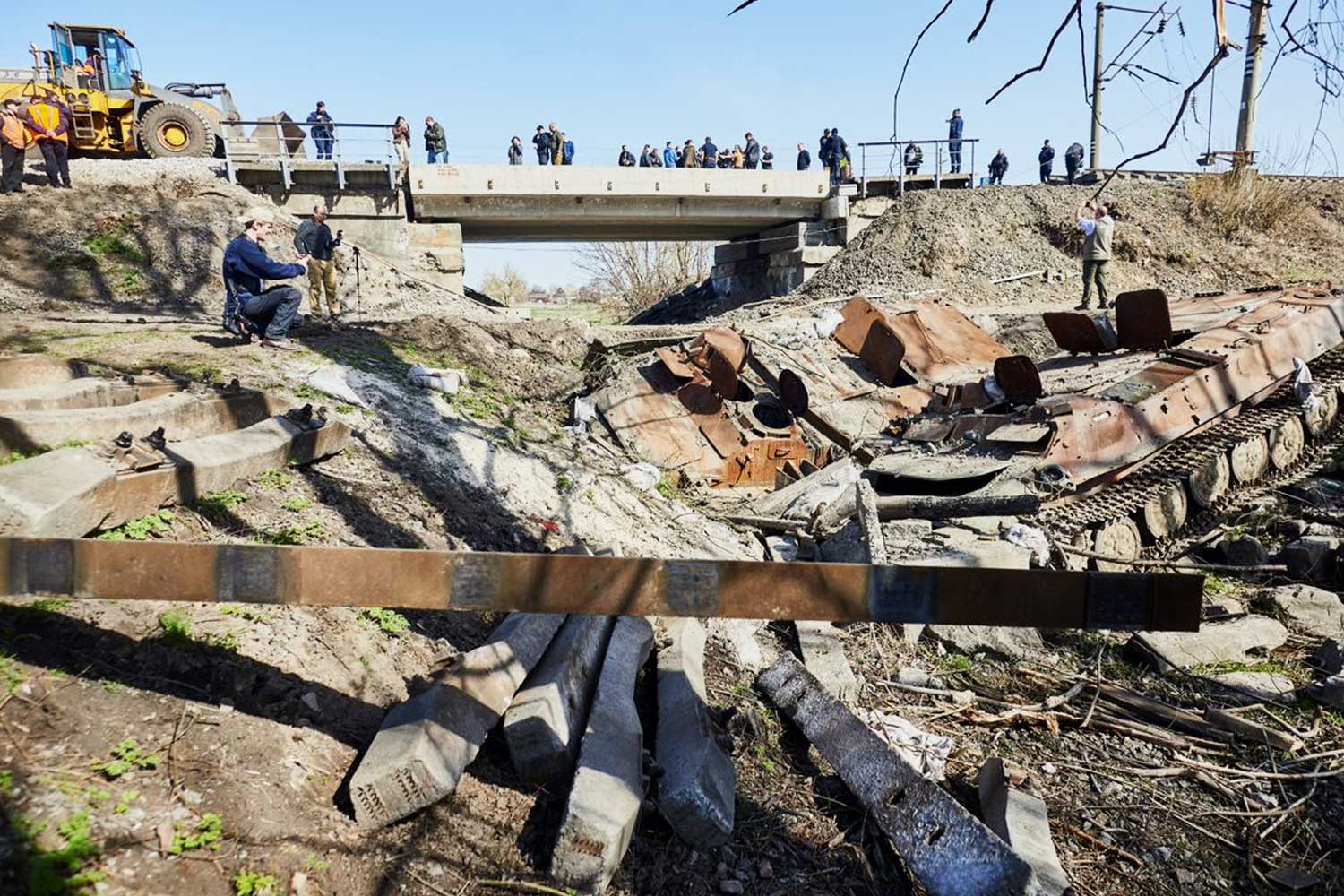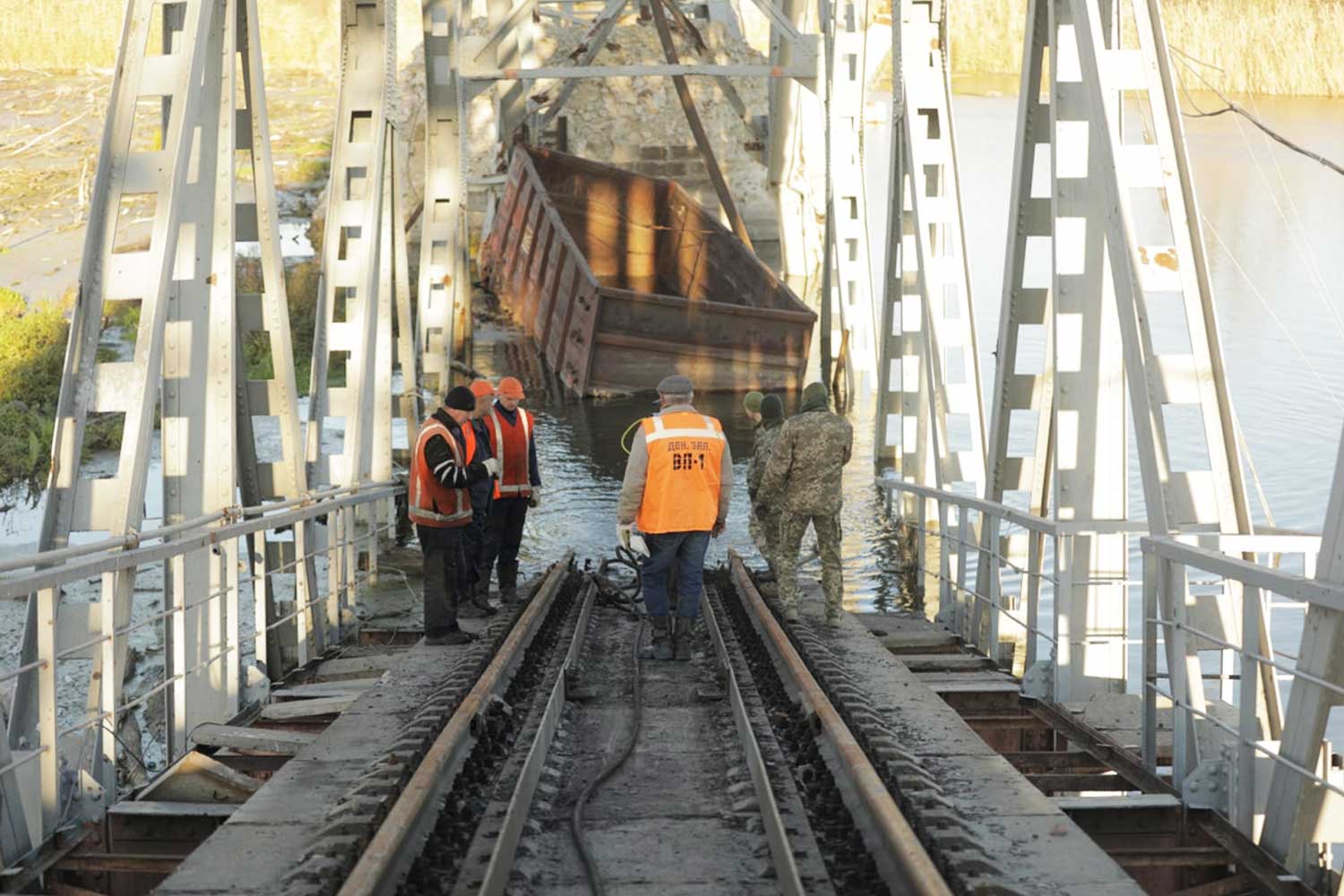Photo credits © Dovgan Tetiana
Oleksandr Kamyshin, president of the Ukrainian Railways, had been hired only a few months before the Russian invasion began on February 24, 2022. He went through a night of extreme uncertainty in his home in downtown Kyiv, but with the awareness that he had able to manage an emergency that only a few months before very few had predicted. The next day, 38-year-old Kamyshin, chose a team of 6 managers who knew every inch of the railway map and transformed the company into the backbone of the country: crucial to the war effort, decisive for transporting people, weaponry and supplies, key for the diplomacy effort through a dedicated train and for exporting foodstuffs blocked for months in docks.

Oleksandr Kamyshin
After almost one year of war, did you expect to become one of the most internationally recognized figure that is fighting the war?
The key figure in the war for independence is a Ukrainian citizen. Ordinary people, who fight on the battlefield, volunteers, workers that keep running the economy, doctors, and teachers – it’s a fight for the country’s future. “Ukrainian railroads” is the biggest employer in the country, and we have proven to be up-and-running and effective from the very first days – securing the unique evacuation process, re-establishing cargo routes, and providing humanitarian aid. Discipline and effectiveness have made “Iron people”, as we call railroad workers these days become a symbol of civilian resilience during the war.

How would you describe with a single word the life of a war-time railway president?
We must be Flexible. There is no textbook or MBA on how to run railroads during the biggest war since the second world war. We must be alert on how to keep running despite rocket attacks since the Russian Federation deliberately targets civilian infrastructure, including the railroads – from electricity substations to train stations, full of people. We must be Fast. Some decisions taken during the war are made in minutes and hours instead of weeks. No time for bureaucracy. After the blockade of the seaports by Russia, aimed to spark a hunger in the world, we increased grain cargo transportation three times – to ensure export capacities. We must be Reliable. Ukrainian railroads are the backbone of the economy in the country, and working under any circumstance allows Ukraine to drive the economy, keep jobs and drive Ukrainian refugees back home.

Would you give us some insights on how the country’s vast rail system has helped it withstand an invasion?
First of all – we successfully evacuated four million Ukrainians from the regions that were under attack, that included one million children. And 120 thousand pets were allowed without any conditions. Secondly, we did our best to keep cargo running, inventing some logistical chains. Of course, cargo transportation froze in the first days, but we managed to increase export by 71%, keeping the economy in Ukraine. (December to march) In the winter, we turned 92 train stations into “invincibility fortresses after Russian strikes on energy infrastructure.” In case of a blackout or city heating system breakdown caused by rocket attacks, people can come to the train stations to warm themselves, power up their gadgets and get a connection. We provide transportation for diplomacy. As you understand, all flights are grounded, and prime ministers, presidents, and other high-ranked diplomats travel in the special diplomatic train; we hosted 227 delegations. We provided a memorable trip for the former Italian Prime Minister Mario Draghi to Kyiv, and now we are waiting for the current Prime Minister Giorgia Meloni to make her trip exceptionally comfortable.

We all read the hashtag #Ironpeople associated to Ukrainian railway workers, how did they deal with the pressure of being bombed while on the job? Did these extraordinary circumstances foster unity and purposiveness? How many lives were lost to this war?
During the war we have 319 railroad workers lost their lives, 703 were wounded, and 123 lost their homes. It’s a dangerous job these days. Still, for almost a year of the war, a haven’t heard a single report on someone who refused to get on the working shift.
A railroad is a place of professionals where discipline is respected as a key virtue. Basically, that’s why people started calling us “Iron people”. This is how we fight for the country.

Would you give us some figures on humanitarian aid supplies tranported on trains/number of people evacuated?
From the very beginning of the war we transported humanitarian aid to every city, including Kharkiv, that was under heavy attack. Our trains provided necessary food, medicine, and hygiene products to those who needed them most. We’re grateful for this help to EU allies, and we do know how much effort Italy and Italian citizens made to help Ukraine. As for now, we calculated that our trains sent 325 thousand tons of humanitarian aid by cargo and 11 thousand tons by passenger trains.

Is the Ukraine energy infrastructure widespread damage distrupting rail traffic? How are you coping with it?
It’s hard to keep traffic on schedule when your country has suffered 12 massive rocket attack waves aimed at the energy infrastructure in recent months. Railroad substations have been under attack since last spring – Russians were trying to disrupt cargo and passenger transportation long before October attacks on energy generation. Passengers experienced some delays, but our system is highly resilient; we have backups and protocols to deal with an accident. No train route was suspended; we only added new routes and destinations. They will not stop us.

Are Ukrainian trains running on schedule a symbol of this war?
This is my highest priority, the second priority after safety: we have to run on schedule. I check this daily, and today, while we’re talking, 97% of trains departed on time and 96% of trains arrived on time. The average result of the last year is 85%. Considering the circumstances, it’s a good result. But we still aim at more.
L.C.